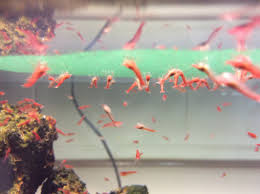Cubaris Murina Papaya Isopods is Perfect for Adding Color to Vivarium
Cubaris murina, commonly known as papaya isopods, are an enchanting species that can add vibrant color and unique character to any vivarium. Native to tropical regions, particularly Southeast Asia, these isopods are celebrated for their striking appearance and fascinating behaviors. The papaya isopod’s name is derived from its vivid coloration, which can range from bright orange to yellow, mimicking the hues of the tropical fruit after which they are named. This colorful display not only makes them visually appealing but also enhances the overall aesthetic of a vivarium, providing a lively contrast to the greenery of plants and the earthy tones of substrate materials. Incorporating Cubaris murina into a vivarium brings more than just beauty; these isopods play a vital ecological role within their habitat. As detritivores, they contribute to the breakdown of organic matter, such as decaying plant material and leaf litter, thereby enriching the substrate and promoting healthy soil conditions.
This natural recycling process is essential for maintaining the balance of nutrients in the vivarium, which can benefit other inhabitants such as plants, amphibians, or reptiles. Their activity aerates the soil, helping to improve drainage and root health, which is particularly important in densely planted enclosures. One of the most appealing aspects of keeping Cubaris murina is their relatively low maintenance requirements. They thrive in humid environments, making them ideal for tropical-themed vivariums. A substrate rich in organic material, combined with adequate moisture, will create the perfect conditions for these isopods to flourish. It is essential to monitor humidity levels, as they prefer environments that are consistently moist but not waterlogged. Regularly providing food sources, such as decaying leaves or commercial isopod diets, will help ensure their health and longevity. Additionally, Murina papaya isopods can be housed with a variety of other small invertebrates and even some small vertebrates, as long as the latter are not large enough to view them as food.
Behaviorally, papaya isopods are intriguing creatures. They exhibit communal behaviors, often found congregating in groups, which can create an engaging display within a vivarium. Observing their interactions can provide insights into their social structure and habits. They are relatively docile, making them suitable for educational purposes, particularly in classroom settings where students can learn about ecosystems, decomposition, and the importance of biodiversity. In terms of breeding, Cubaris murina can reproduce readily in captivity, offering the potential for hobbyists to cultivate their populations. This can be particularly rewarding, as breeding success can contribute to a more sustainable ecosystem within the vivarium. The young, known as mancas, are miniature versions of adults and can be seen scuttling around, adding to the dynamic nature of the enclosure. Overall, the addition of Cubaris murina papaya isopods to a vivarium not only enhances its visual appeal but also supports ecological processes that benefit the overall health of the habitat.
Read more







